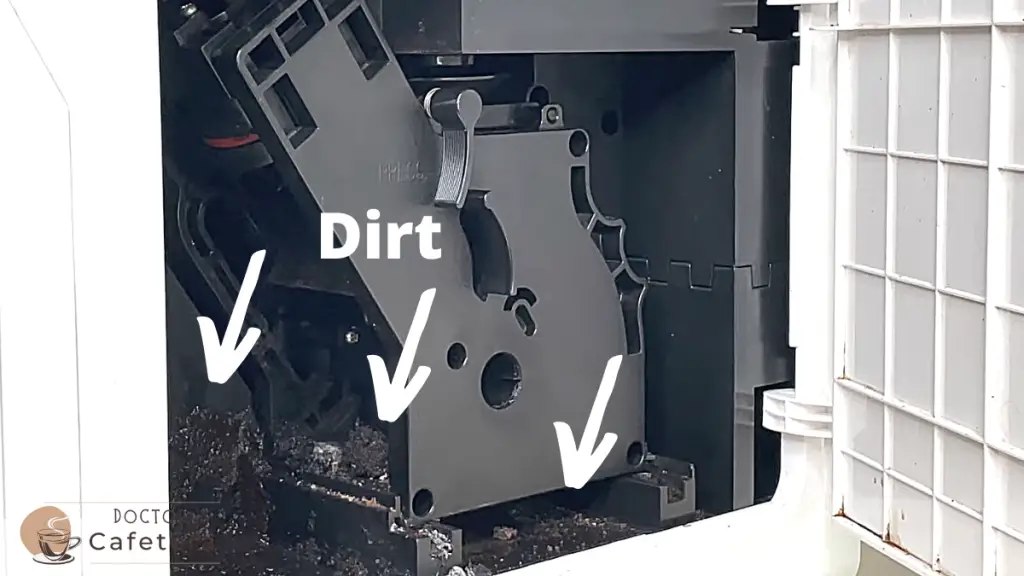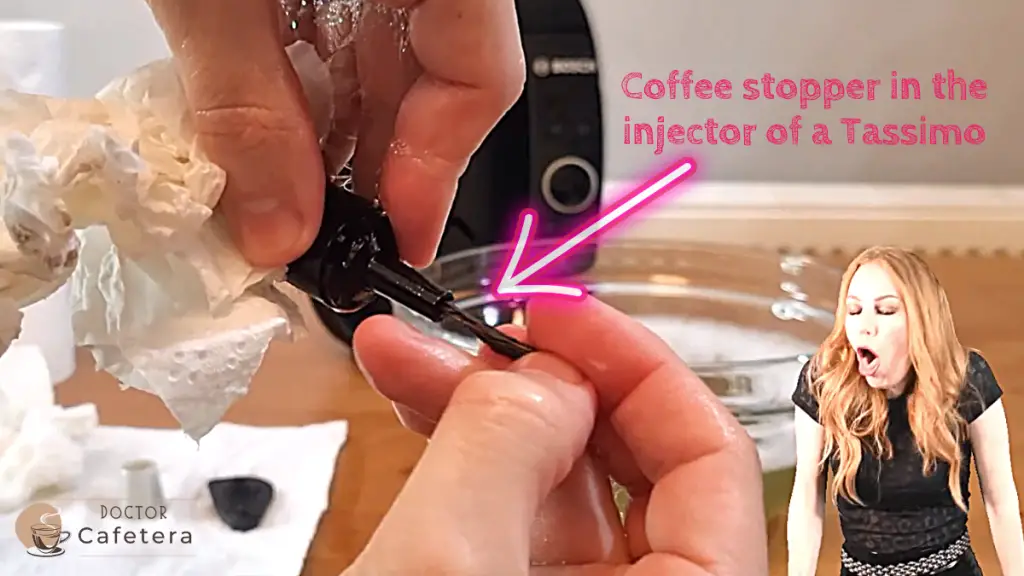The coffee maker is one of the most used appliances in the house. Therefore, it is one appliance that requires the most cleaning and maintenance. Since coffee makers are used several times a day, they should be cleaned regularly, combining a superficial cleaning after each coffee preparation and deep cleaning once a week.
If a coffee maker is not kept in optimal hygienic conditions, bad odors, bad coffee flavor, and even health problems can appear. To eliminate these bad odors from the coffee maker, you only need to perform a deep cleaning, including a descaling process.
6 Reasons why a coffee maker can smell bad
We have already said that the main reason why your coffee maker smells bad is the lack of cleanliness, but if you want to know where the bad smell comes from, I will show you the main places and their causes:
1. Remains of coffee grounds in one of the compartments
The accumulation of coffee grounds by themselves does not smell bad. However, coffee grounds are perfect for mold growth and other organisms, which give off unpleasant odors.
This is a musty or moldy smell that is usually very persistent. Once you have thoroughly cleaned the coffee grounds, the coffee maker may still smell bad. To eliminate this odor, clean the affected areas with water, dish soap, and vinegar.
Note: For a while, you may smell vinegar, but this odor will disappear with subsequent cleanings with clean water.
2. Remains of milk between the casings of the coffee maker
If your coffee maker has a milk reservoir or frother, it is most likely that, at some point, you have splashed the coffee maker with hot milk. If this milk accumulates inside the coffee maker, the smell will be unbearable when the internal temperature and humidity increase.
When the milk splashes the coffee maker, even if you wipe it immediately afterward, it leaks into the interior very easily. In all the cases I have seen, it is necessary to disassemble the casings to clean the interior, as indicated in the previous section.
3. Decomposed water in the tank
It is practically impossible for the water in the tank to smell bad. Normally the water is in bad condition because it is mixed with some organic substance that may have gotten there during a refill.
We all change the water in the tank regularly, but not all clean it with a sponge. To eliminate these bad odors from the water tank, clean it with water and mild dish soap.
Tip: When your coffee maker is empty and not in use, remove the lids of the water tank and the coffee maker. This allows the interior to dry completely and will help reduce the proliferation of mold and bacteria. These types of mold and bacteria thrive in humid environments.
4. Accumulated different substances in the drip tray
This section combines the previous three since coffee, milk, and water residues affect the drip tray. But in addition, the drip tray is much more exposed to the elements, so it is easier for food residues and other substances to end up there.
Keep the drip tray clean, and you won’t encounter any odor problems. If it smells bad, use the same mixture of water, soap, and vinegar.
5. Residues accumulated in the injector
The injector is in constant contact with the coffee capsule, the ground coffee, and the water, depending on the type of coffee maker. When in contact with the coffee, the water can remain stagnant there for a long time, and factors such as climate or temperature cause this part of the coffee maker to generate unpleasant odors.
Removing this area of the coffee maker and cleaning it thoroughly with clean water and dish soap would be advisable.
6. The internal circuit of the coffee maker
In the internal water circuit, bad odors can be caused by dirt, particles in the water, or trapped coffee.
Note: It should be clarified that the coffee makers have non-return valves that prevent the coffee beans from returning to the internal components, although they do not always succeed.
In this case, it would be advisable to descale the coffee immediately. You can add one part of vinegar and one part of water to the decomposer and start a cleaning cycle. This will remove not only the odor but also the limescale residues.
➡️ Because of all these factors mentioned above, it is important to learn how to clean the coffee maker efficiently, without spending a lot of time, with safety procedures and real results.
How to clean a coffee maker to eliminate bad odor
In many cases, the solution depends on where the dirt is located, but to eliminate the odor of the coffee maker, we recommend two basic and non-exclusive processes:
- Practice a thorough cleaning of all the external components of the coffee maker to eliminate visible debris. For this, you can use water and mild dish soap (add vinegar in cases of bad odor).
- Descale the coffee maker, either with vinegar or with a specific descaler.
Steps to eliminate bad odor from the coffee maker
- When eliminating odors from a coffee maker, the first thing to consider is to focus on the external components. The greatest amount of residue that can cause odors is usually in the drip tray and the areas near the extraction outlet, although this will depend on the type of coffee maker we have.
- After cleaning all the exterior areas and moving parts, you should start with the water deposits or coffee grounds. Normally these deposits are inserted inside the coffee makers and therefore are more exposed to humidity and high temperatures, being more prone to generate bad odors.
- Finally, disassembling the casings will allow you to access the interior of the coffee maker, where there may be organic residues that produce bad odors. Disassembling a coffee maker is a more extreme case, which should be done if the two previous steps have not eliminated the odor.
How often should I clean my coffee maker to eliminate bad odors?
To know when it is convenient to clean any coffee maker, it is important to determine the frequency of use of this equipment. If you use your coffee maker three or more times a day, it is convenient to perform basic maintenance every day, or if it is not possible, you can do it every other day.
Every day you should remove any coffee residue and splashes from the coffee maker, wipe the exterior with a damp cloth, and wash the drip tray and the capsule holder or filter holder (depending on the coffee maker).
It is important to remember that we do not need to dedicate a lot of time to cleaning the coffee maker since daily maintenance can be carried out in less than a minute.
Note: Consult the user’s manual of your coffee maker to know what instructions and frequency the manufacturer recommend.
Descaling to eliminate bad odors from the coffee maker
If your coffee maker gives off bad odors when brewing coffee, another possible solution can be to descale it. This will help to eliminate limescale, improve its operation and eliminate any organic remains that may be incrusted in the internal circuit of the coffee maker.
The specific descaling liquids usually eliminate the bad odor at the same time that they perform the descaling, but so does vinegar. Therefore, whatever method you use for descaling will help remove the bad odor inside the coffee maker.

